TED TALKS : THE PLAYFUL STORY BEHIND GREAT INVENTIONS
From the flute through the loom to the computer
Just a fragment from the presented here below amazing history in pictures is the link between the weaving loom and the computer.
In 1801, in Lyon, France Joseph Marie Jacquard (1752-1834) demonstrates a loom that enabled unskilled workers to weave complex patterns in silk. The Jacquard Loom is controlled by a chain of multiple cards punched with holes that determine which cords of the fabric warp should be raised for each pass of the shuttle. The ability to store and automatically reproduce complex operations finds wide application in textile manufacturing.
In 1832, Semen Korsakov (1787-1853) devises methods of searching information stored on punched cards for the Russian Police Ministry. English mathematician Charles Babbage describes plans to use punched “number cards” to input programs and data into his Analytical Engine in 1837.
Scottish clock maker Alexander Bain (1811-1877) uses a “continuous card” in the form of punched paper tape to speed the input of text messages for transmission over the railroad telegraph in 1846. Data storage and input on punched tape remains in use for small computers and machine tool control through the early 1970s.
In 1890 American inventor Herman Hollerith (1860-1929) builds an electro-mechanical tabulator to analyze statistical information stored on punched cards for the U.S. Census. Hollerith finds the Tabulating Machine Company in 1896 to exploit other applications for his system. The original Hollerith punch card (3 1/4" high and 7 3/8" wide) is approximately the same size as the US dollar bill at the time to facilitate adaptation of some existing storage and handling devices. Hollerith's firm and three others merge to form the Computing Tabulating Recording Company in 1911 that is renamed International Business Machines Corporation in 1924. Other companies, including Burroughs, NCR, Powers Samas, and Remington Rand, introduce their own cards but as IBM grows to dominate the early data processing industry, its format with rectangular holes and 80 columns introduced in 1928 emerges as a standard data storage medium.
But our story here starts way before that when the ancient man decided to make something incredible out of the bone he found - he made a flute...... And this was just the beginning of the amazing journey of genious inventions....
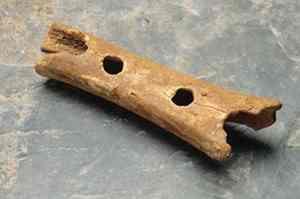 Divje Babe flute Slovenia 43,000 yrs old
Divje Babe flute Slovenia 43,000 yrs oldIn the Divje Babe archaeological park in northwestern Slovenia, researcher Ivan Turk found a 43,000-year-old cave bear femur that had been reshaped as a flute. Studies of the bone indicate that it was from the left femur of a cave bear that was only one or two years of age. The fragment is 11.6 mm long, and the two complete holes are of differing sizes and nearly 35 mm apart.
Turk named the flute a “Neanderthal flute,” not because the Neanderthals made it, but because it came from the period when they existed, which was approximately 55,000 years ago.
The artifact is housed today in the National Museum of Slovenia, along with other finds recovered from the Divje Babe archaeological site.
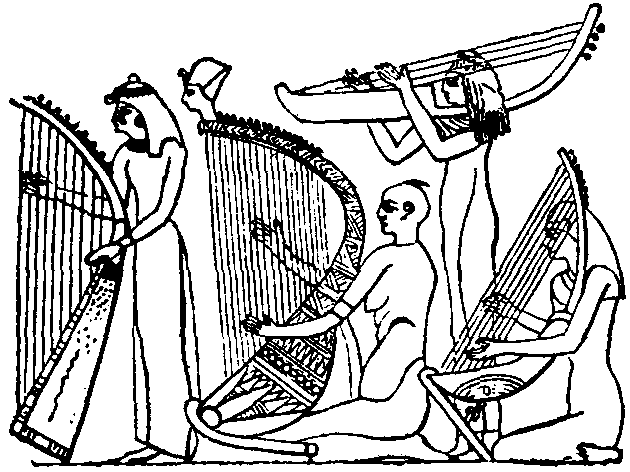 Britannica Harp Egyptian Harp Variety
Britannica Harp Egyptian Harp VarietyThe ancient Egyptian harp dates back over 5000 years! It is the bridging element between the large archery bows string with about 4-5 strings and the developed basic musical bow instrument - the ultimate ancestor of both the harp and lyre.....
From the hunting tool to the musical instrument the steps were logical and during its progress more strings were gradually added to reach the number of 22 - the classic full-sized ancient Egyptian arched harp.
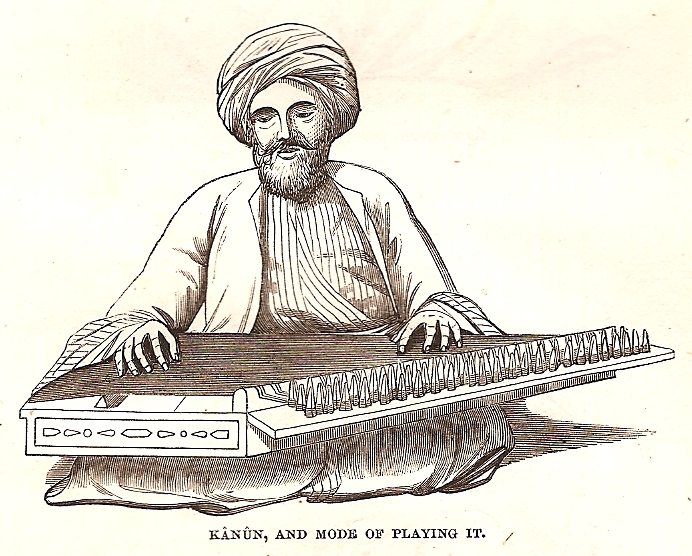 Kanun
KanunThe Kanun (Qanun) is a traditional Middle Eastern string musical instrument played either solo or often as part of an ensemble. It has a long history, descended from the ancient Egyptian harp.
The qanun is constructed usually with five skin insets that support a single long bridge resting on five arching pillars. It has a trapezoid-shaped hollow sound box made out of walnut wood and 78 strings - 26 sets of 3 strings.
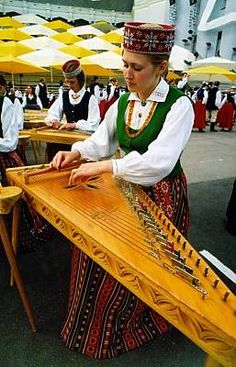 Latvian Kokle
Latvian KokleWhile the Middle East is already playing on the qanun, a new instrument emerges in the Baltic lands of Latvia - the Latvian kokles.
The first possible kokles related archeological findings in the territory of modern Latvia are from the 13th century, while the first reliable written information about kokles playing comes from the beginning of the 17th century.
Similarly to the qanun, the kokles have have a hollow trapezoidal body usually carved out of a single piece of wood that's topped with a thin ornated wooden soundboard. A distinct feature that sets kokles apart from most of the other string instruments is that the strings don't rest on a bridge, making the sound quieter, but richer in timbre. Wooden (or sometimes metal) tuning pegs are set into the wide tip of the body, while at the narrow tip is a metal rod upon which the strings are secured, giving the strings a slightly fan-shaped arrangement. The strings may be of brass or steel. Traditionally, there were 6–9 strings which later increased to 10 and more.
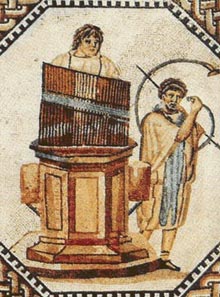 Hydraulis Ctesibio Greece 3rd Century BC water organ
Hydraulis Ctesibio Greece 3rd Century BC water organA hydraulis is an early type of pipe organ that operated by converting the dynamic energy of water into air pressure to drive the pipes. The name hydraulis means literally "water (driven) pipe (instrument)." It is attributed to the Hellenistic scientist Ctesibius of Alexandria, an engineer of the 3rd century BC. The hydraulis was the world's first keyboard instrument and was, in fact, the predecessor of the modern church organ. Unlike the instrument of the Renaissance period, the ancient hydraulis was played by hand, not automatically by the water-flow; the keys were balanced and could be played with a light touch, as is clear from the reference in a Latin poem by Claudian (late 4th century), who uses this very phrase (magna levi detrudens murmura tactu . . . intonet, “let him thunder forth as he presses out mighty roarings with a light touch”) (Paneg. Manlio Theodoro, 320–22).
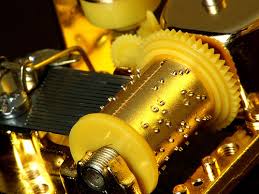 Water music box cylinder Banu Musa brothers Iran 9th Century AD
Water music box cylinder Banu Musa brothers Iran 9th Century ADBanu Musa brothers - Muhammad, Ahmad and al-Hasan, are the brilliant mathematicians and astronomers of the 9th century, translators of the Greek scientific works into Arabic and founders of the Arabic school of mathematics.
Among the multiple mechanisms, machines and devices the three brothers create is also the mechanical musical machine with automatically interchangeable cylinders - in fact exactly this cylinder with raised pins on the surface remains the basic device to produce and reproduce music mechanically until the second half of the nineteenth century.
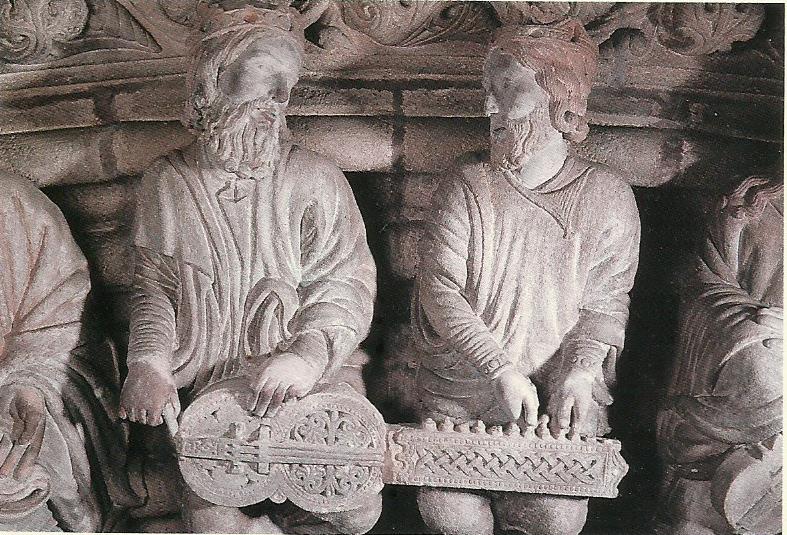 Organistrum Santiago 1188
Organistrum Santiago 1188In the centre of the band of musicians representing the twenty-four elders of the Apocalypse in the tympanum of the Gate of Glory of the Cathedral of Santiago de Compostela (12th century) sits a beautiful example of the Organistrum - the ancient musical instrument, played by two individuals: one turning the crank while the other pulling the keys upward to change the musical pitch of the melody strings.
The Organistrum is an early form of the hurdy-gurdy instruments - stringed instrument that produces sounds by a hand crank-turned, rosined wheel rubbing against the strings. The evolution of development now looks at complicated combination of wood, metal, string - a form of a violin with the sound of a bagpipe.
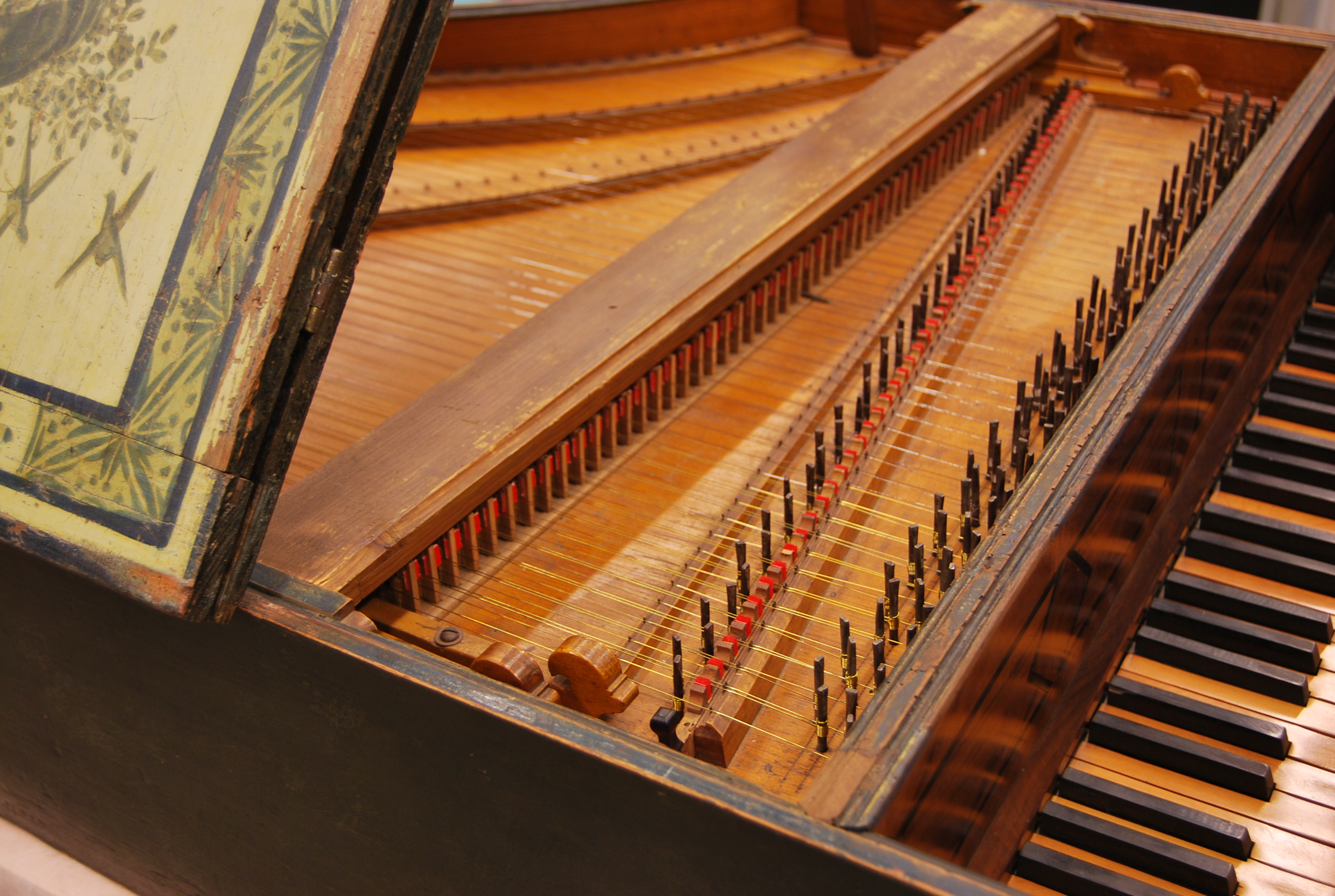 Harpsichord 1400
Harpsichord 1400The year is 1397 and jurist in Padua, Italy writes the claim of a certain Hermann Poll to have invented an instrument called the 'clavicembalum' - the earliest known representation of a harpsichord. Whether this is true remains for ever a mystery but the fact is that the harpsichord becomes one of the most used musical instruments from the 15th to the 18th centuries in Europe.
Two events determine the invention of the harpsichord: the 14th century is time with advanced clockwork and other machinery development that gives the way to plunk strings mechanically; and the second event is the gradually increase of size - no longer instruments are held in hands that increases the sound these new inventions create.
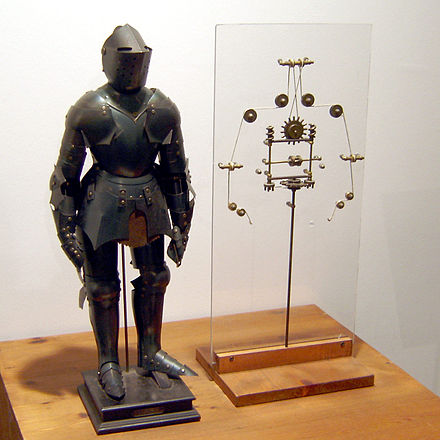 Model of Leonardo Davinci's Automaton 1495
Model of Leonardo Davinci's Automaton 1495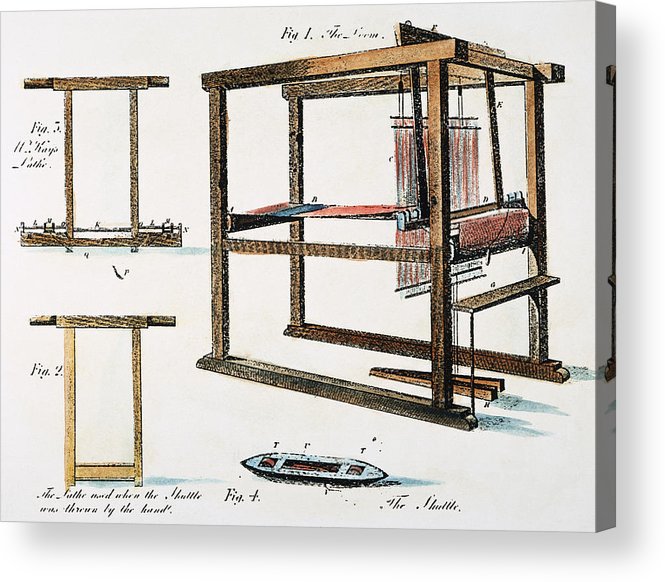 Loom John Kay flying shuttle 1733 granger
Loom John Kay flying shuttle 1733 granger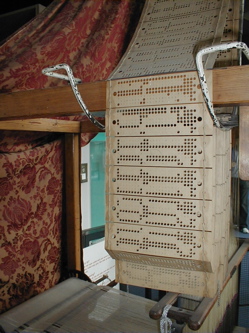 Jacquard loom punched cards 1801
Jacquard loom punched cards 1801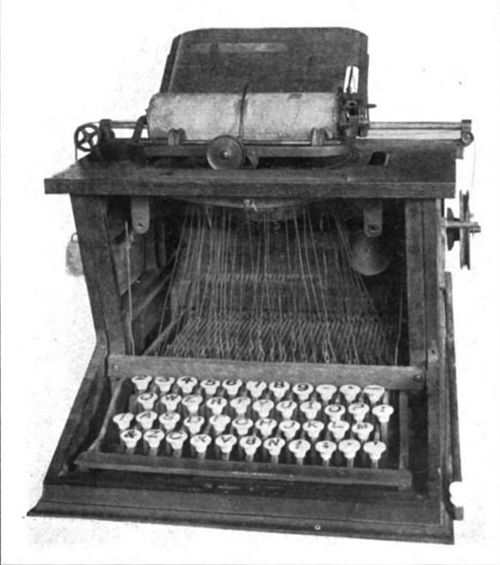 Sholes typewriter 1873
Sholes typewriter 1873